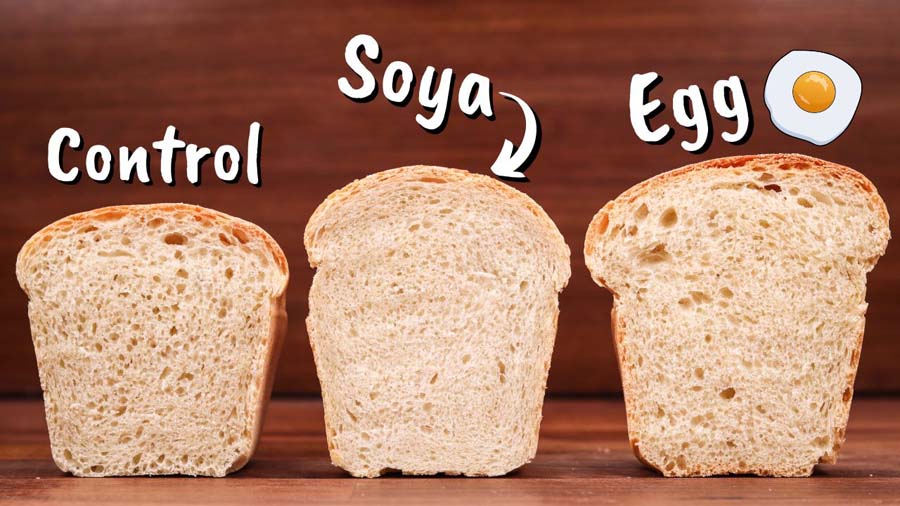Soya lecithin is a common ingredient in factory made bread. It is an emulsifier.
An emulsifier stabilizes and helps combine two substances that would not mix otherwise. Most notably fat and water. In large bread productions the dough is made in a very different way than home made bread. It can’t be called bread most of the time as the process is like cake making. Dough is whipped and aerated. The lecithin is added to stabilize this whipped mix and helps it keep its shape. That is why store-bought bread has such great volume and softness. There are of course several other additives that help too.
When it comes to home made bread the mixing process is far gentler, so the emulsifying effect of lecithin may not work the same way.
Why use it then?
Lecithin does strengthen gluten even if the dough is not mixed violently. Stronger gluten allows for more carbon dioxide build-up in the dough making it rise higher and gain more volume. The crumb of such a bread will be softer, more tightly packed, and smoother.
It is said that it can help bread stay softer for longer, but I have not noticed this in my experience.
Soya lecithin can be bought as a powder or as a syrup.
Are there alternatives?
There is one great alternative – egg yolks. 100g of egg yolks contain between 5g and 8g lecithin. That translates to around 1g lecithin per 1 egg yolk. This is my go-to when it comes to increased bread volume and softness.
Fats can have similar effects on dough. And dough improvers like tangzhong and yudane can also be used.
How to use lecithin in bread dough?
The recommended dose of the powdered version can be between 0.2% and up to 3% in baker’s math depending on where you read about it. I tried 0.6% and it made almost no difference. I found that 1.2% has a great effect and I’m sure that 1% would work just fine too.
When it comes to egg yolks, then the 0.6% dose works quite well. So, for 150g flour I would use 1 yolk.
The recipe specs.
All three breads contained 150g flour, 3g salt, 2g instant dry yeast.
The dough with no lecithin had 10g butter and 90g water.
The dough with soya lecithin had 10g butter, 90g water, and 1g lecithin. This was the first try. On the next one I doubled the lecithin and that is the one that worked a lot better.
The dough with egg yolk contained 6g butter, 81g water, and 18g egg yolk. The amount of water and butter was adjusted to account for the water and fat content in the yolk.
It is up to you what you add to your bread dough. I personally do not use soya lecithin or ascorbic acid because I know how to achieve good results without them. If you want to learn those techniques, then head over to the Principles of Baking playlist.
Watch the video here



